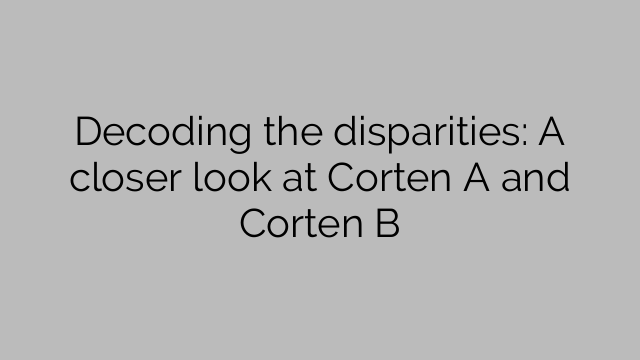When it comes to architectural materials, Corten steel has gained popularity in recent years due to its distinctive rustic appearance and weather-resistant properties. Its ability to resist corrosion has made it a favored choice in architectural and design projects around the world. However, within the Corten steel family, there are two distinct variations that often lead to confusion: Corten A and Corten B.
Corten A and Corten B are both types of weathering steel, which is a group of steel alloys that develops a protective layer of rust when exposed to the elements. This self-protecting characteristic eliminates the need for paint or additional coating, making it an attractive option for artists, architects, and designers.
Firstly, Corten A is primarily used in outdoor structures that are constantly exposed to the elements. It is known for its high strength and resistance to atmospheric corrosion caused by rain, snow, humidity, and other environmental factors. Corten A grades also offer excellent weldability, making it an ideal choice for construction applications where joining steel elements is necessary.
On the other hand, Corten B is a slightly different composition with a higher concentration of phosphorus and copper. This variant is typically used in applications where higher strength and improved corrosion resistance are required. Thanks to its enhanced properties, Corten B is often chosen for structural components, such as bridges, building facades, and other heavy-duty projects.
In terms of appearance, both Corten A and Corten B develop a reddish-brown rust patina over time. This patina acts as a protective layer, preventing further corrosion and giving the material its characteristic weathered look. This stunning aesthetic has made Corten steel a favorite for artistic installations and landscaping features.
One important consideration when working with Corten steel is its initial reaction to moisture. During the weathering process, Corten steel releases a substance known as runoff, which can stain surrounding surfaces such as concrete or other porous materials. Therefore, it is crucial to plan and safeguard the installation area appropriately to minimize any potential runoff concerns.
Furthermore, it’s worth noting that Corten steel is not suitable for every environment. In areas with heavily chlorinated or acidic atmospheres, the corrosion process can accelerate, potentially leading to faster deterioration. Additionally, Corten steel is not recommended for use in areas with high salt concentration, as the salt particles can interfere with the protective rust layer, diminishing its durability.
In conclusion, Corten A and Corten B are both prominent members of the weathering steel family. While they share similarities in their weather-resistant properties and distinctive rusted appearance, they have slight differences in composition and applications. Understanding these disparities is crucial when selecting the appropriate Corten steel grade for specific architectural, artistic, or design projects. As always, it’s advisable to consult with a professional or a knowledgeable supplier to determine the most suitable choice for your particular project requirements.
[ad_2]

